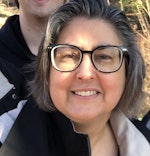Cavity prevention: Using sealants and SDF in your dental practice, successfully
Are you using dental sealants and silver diamine fluoride (SDF) in your practice? Research supports the use of sealants to prevent and even stop occlusal caries, and SDF is shaping up to be comparable to sealants in halting cavities.
And dental sealants aren’t just for kids. They’ve also been shown to be a cost-effective treatment for caries prevention in older adults.
One dentist says, “Dental sealants are one of the most universally used safeguarding materials, as well as the most inadvertently misused products today." While sealants may be one of the dental procedures most likely to prematurely fail, it doesn’t have to be that way.
In this collection of articles, you’ll learn from the best experts—your fellow practicing dental clinicians—about their best practices for dental sealants and silver diamine fluoride, as well as how to get reimbursed for these procedures by dental insurance. Sealants are noninvasive, easy to place, cost-effective, and a critical player in the fight against dental caries. Now, with SDF, health-care professionals are moving forward with greater access to care.
Dental sealants: Don’t underestimate their power
Dr. Adrien Theriot says, “Think of sealants as the Captain America shields against tooth decay.” They are noninvasive, easy to place, cost-effective, and a critical player in the fight against dental caries.
A protocol for placing pit-and-fissure sealants
Using dental sealants to prevent or arrest occlusal caries in permanent dentition
Dr. Erinne Kennedy believes that we can fail our adult patients if we do not diagnose, treatment plan, and reimburse for sealants throughout their lifetime.
“Dental sealants: I love to hate ’em”
A patient in her mid-20s had dental sealants on all her molars, never had a cavity in her life, and her mom is a hygienist. Dr. Stacey Gividen had to give her the bad news, but an intraoral camera made it easier.
Dental sealants have a shelf life
Staci Violante, RDH: “Too often when a sealant fails, the decay has already reached the pulp resulting in extensive, costly restorative work. In hindsight, a patient who had a healthy, virgin tooth, now has a diseased one.” When you’re talking about sealants with your patients, don’t forget to include the importance of oral health in the conversation.
Weighing the pros and cons of sealants with your patients
Making dental sealants last longer
Are your dental sealants failing prematurely? Dr. Gordon Christensen says it doesn’t have to be that way. He shares his advice and best practices.
Why are these sealants failing?
Silver diamine fluoride: It’s not just for kids anymore
Lori Gordon Hendrick, MS, RDH, and Dr. Joseph Hendrick Jr. talk about how they use SDF in their practice to arrest and prevent caries in their older patients: “In our practice, SDF is one of the most recommended dental medicaments for older adult patients who do not want or cannot tolerate lengthy and costly dental procedures.”
Taking the challenge out of oral care for older adults
SDF is as effective as sealants for preventing and halting cavities
A multiyear study of nearly 3,000 New York City schoolchildren found that a single dose of silver diamine fluoride or a dental sealant given in elementary schools prevented roughly 80% of cavities and kept 50% of cavities from worsening when the children were seen two years later.
CPT code encourages application of SDF to treat cavities
A CPT code has been approved for application of silver diamine fluoride by health-care professionals to treat cavities without a dental filling—a milestone in medical-dental integration and a step forward for access to care.







